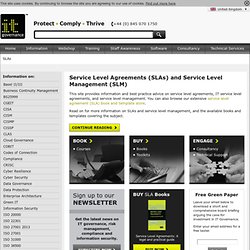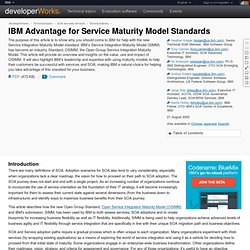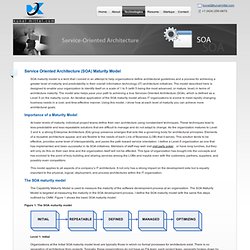

Service catalog. Service-level agreement. A service-level agreement (SLA) is a part of a service contract[disambiguation needed] where a service is formally defined.

In practice, the term SLA is sometimes used to refer to the contracted delivery time (of the service or performance). As an example, Internet service providers and telcos will commonly include service level agreements within the terms of their contracts with customers to define the level(s) of service being sold in plain language terms. In this case the SLA will typically have a technical definition in terms of mean time between failures (MTBF), mean time to repair or mean time to recovery (MTTR); various data rates; throughput; jitter; or similar measurable details.
Overview[edit] A service-level agreement is an agreement between two or more parties, where one is the customer and the others are service providers. SLAs have been used since late 1980s by fixed line telecom operators as part of their contracts with their corporate customers. SLAs - Service Level Agreements. This site provides information and best practice advice on service level agreements, IT service level agreements, and service level management.

You can also browse our extensive service level agreement (SLA) book and template store. Read on for more information on SLAs and service level management, and the available books and templates covering the subject. On this page: Advantage for Service Maturity Model Standards. Introduction There are many definitions of SOA.

Adoption scenarios for SOA also tend to vary considerably, especially when organizations lack a clear roadmap; the vision for how to proceed on their path to SOA adoption. The SOA journey does not start and end with a single project. As an increasing number of organizations continue to incorporate the use of service orientation as the foundation of their IT strategy, it will become increasingly important for them to assess their current state against several dimensions (from the business down to infrastructure) and identify ways to maximize business benefits from their SOA journey. This article describes how the new Open Group Standard, Open Service Integration Maturity Model (OSIMM) and IBM's submission, SIMM, has been used by IBM to both assess services, SOA adoptions and to create blueprints for increasing business flexibility as well as IT flexibility.
Service Oriented Architecture Maturity Model. SOA maturity model is a term that I coined in an attempt to help organizations define architectural guidelines and a process for achieving a greater level of maturity and predictability in their overall information technology (IT) architecture initiatives.

The model described here is designed to enable your organization to identify itself on a scale of 1 to 5 (with 5 being the most advanced, or mature, level) in terms of architecture maturity. The model also helps pave your path to achieving a true Services Oriented Architecture (SOA), which is defined as a Level 5 on the maturity curve. An iterative application of the SOA maturity model allows IT organizations to evolve to meet rapidly changing business needs in a cost- and time-effective manner. Using this model, I show how at each level of maturity you can achieve more architectural goals. Enabling the Service-Oriented Enterprise. By William Oellermann Summary: Building Web services is pretty easy today.

Building lots of Web services is a little more difficult, and managing those Web services is really difficult. As the number of services and service consumers grow, the fundamental benefits of service orientation diminish if certain IT capabilities are not provided. Let's look at a model that can facilitate the identification and prioritization of these capabilities for the service-enabled enterprise. Contents A Capability-Driven Maturity ModelRoad Map PerspectivesESOMM CapabilitiesRepeatable Layer CapabilitiesSupportable Layer CapabilitiesExtensible Layer CapabilitiesA Word on Maturity ModelsApplying the ModelAbout the AuthorResources When talking with customers and colleagues about Web services, you'll find that much of the excitement and interest is focused on the specifications that have helped this technology quickly become a de facto standard: SOAP, WSDL, XML, WS-Security, and so forth.
Road Map Perspectives. Increase flexibility with the Service Integration Maturity Model (SIMM) Introduction We spend a considerable amount of time flying around the country for various SOA-based projects, and we’ve had the opportunity to learn about not only the recurring client pain points and value propositions around SOA, but also a tiny bit about flying.

Pilots are given landing patterns when they approach an airport; air-traffic control gives them these directions, approaches, and coordinates in order to accommodate the complexity of moment to moment changes in events that are occurring around the airport: other planes, wind direction, airpressure, and a host of other factors. In a similar way, the path to SOA must consider several typical approaches, which we address here. SOA adoption is a gradual process. While some organizations dabble with Web services by wrapping applications as a means of exploring the world of SOA and deciding how to proceed, others engage in enterprise-wide business transformation. Back to top The seven stages of maturity Figure 1. Conclusion. Service Integration Maturity Model. The New Services Maturity Model - QuickArrow - ServiceLine White Papers. The New Services Maturity Model — A Roadmap For Achieving Services Excellence - by Jeanne Urich, Managing Director, Service Performance Insight The technology professional services business is starting to mature.
Signs that the industry has moved from “birth” to “adolescence” or even “adulthood” are everywhere. Gone are the days of the “ants” – Viant and Scient, with huge market capitalization but limited profits. The heady days of the dot.com boom have been replaced by large public offerings for Accenture, Cap Gemini and Bearing Point, and consolidation of PWC and Cambridge Technology Partners. Within technology product companies there is an intense focus on growing revenue and margin from professional services. However, little if any research exists to understand and quantify the technology professional services maturity model. What are the most important focus areas for professional service organizations (PSOs) as their business processes mature?
Figure 1.